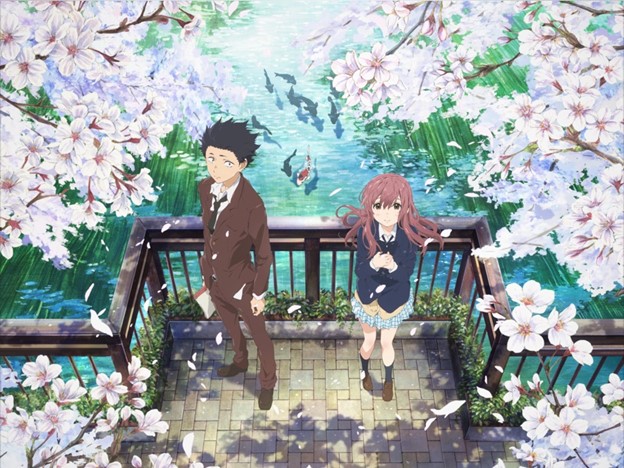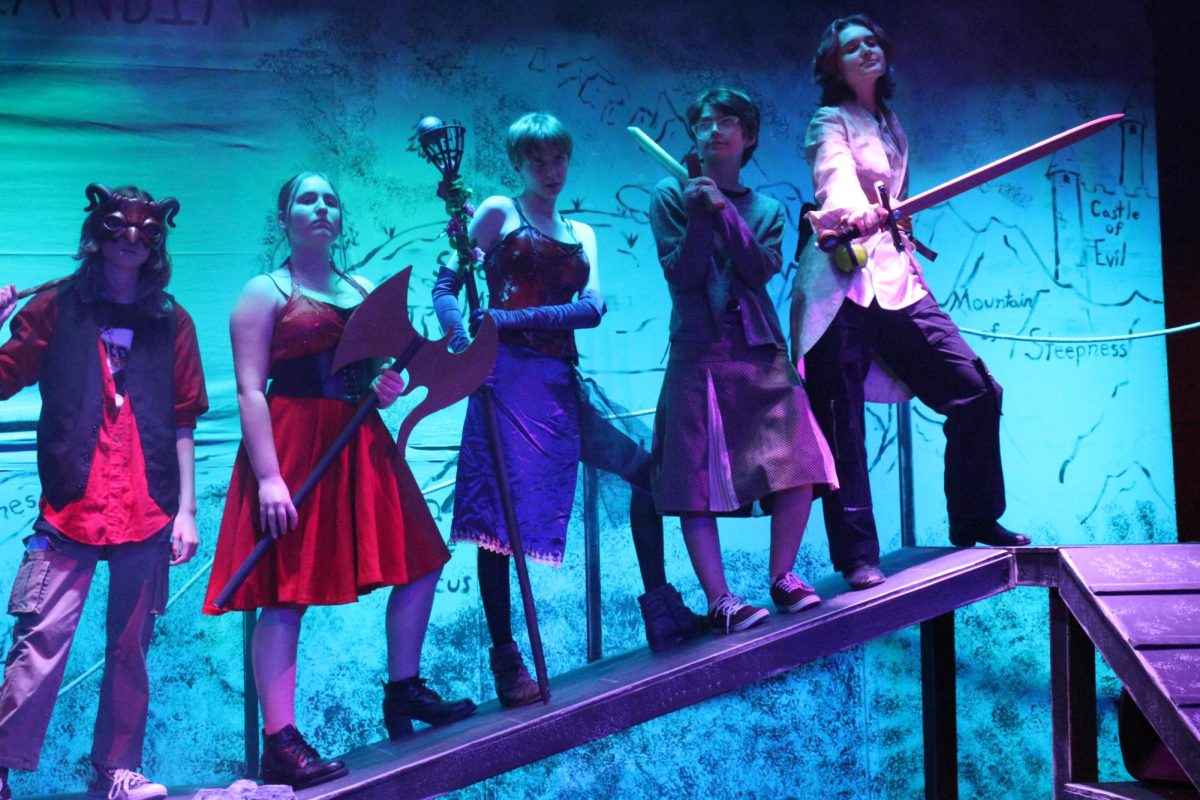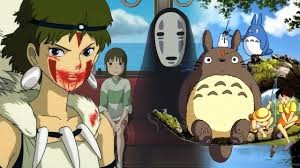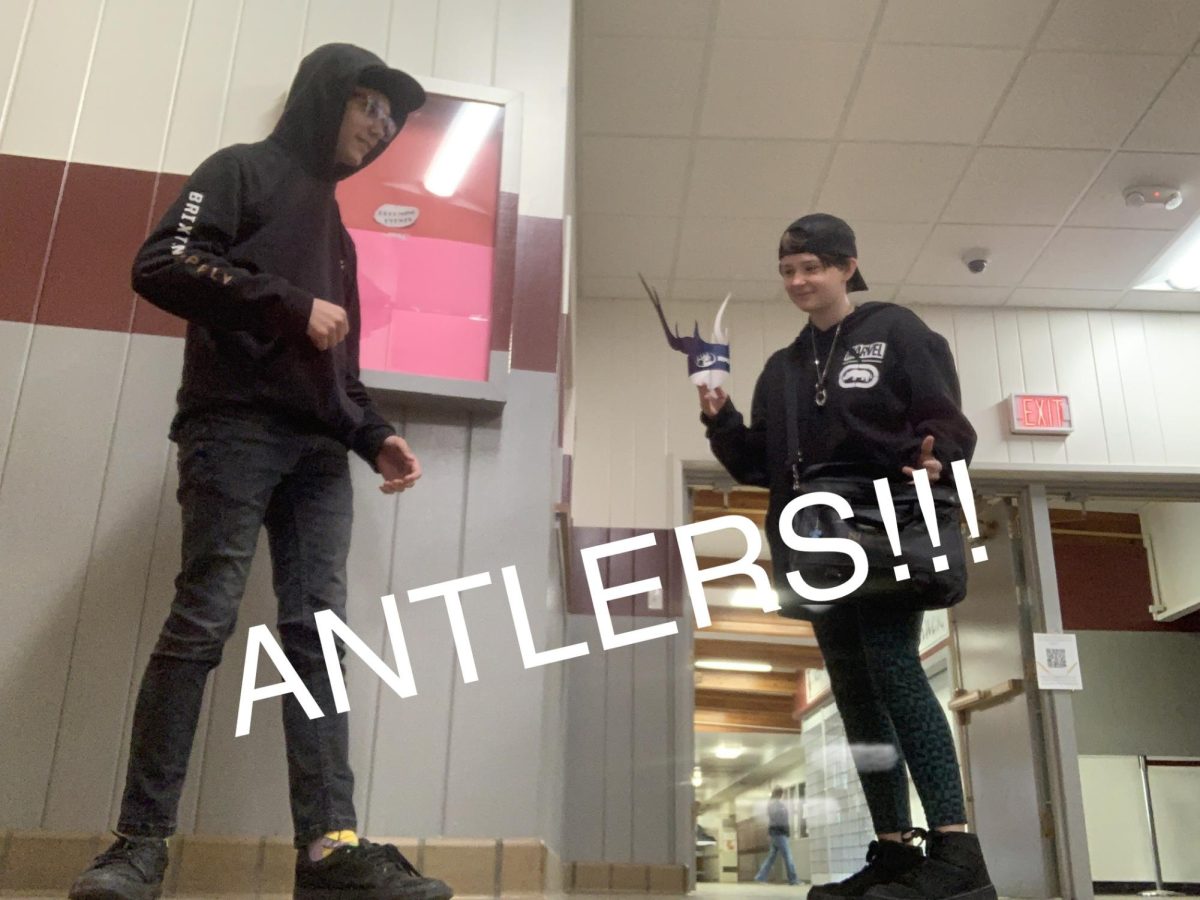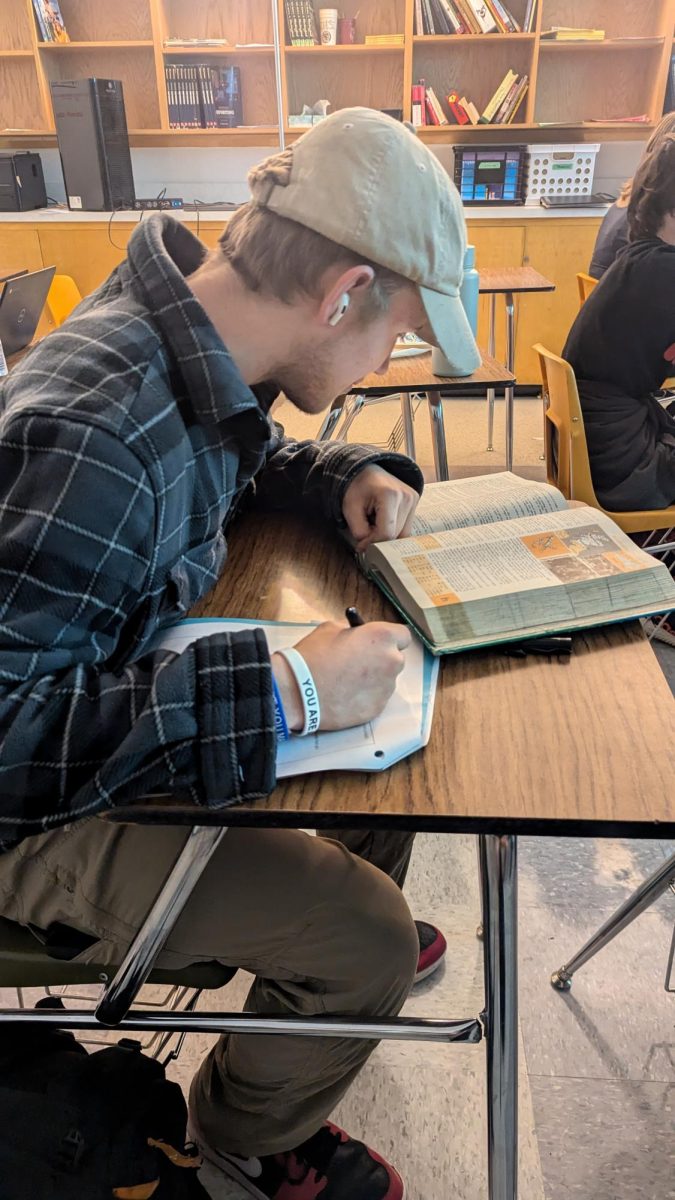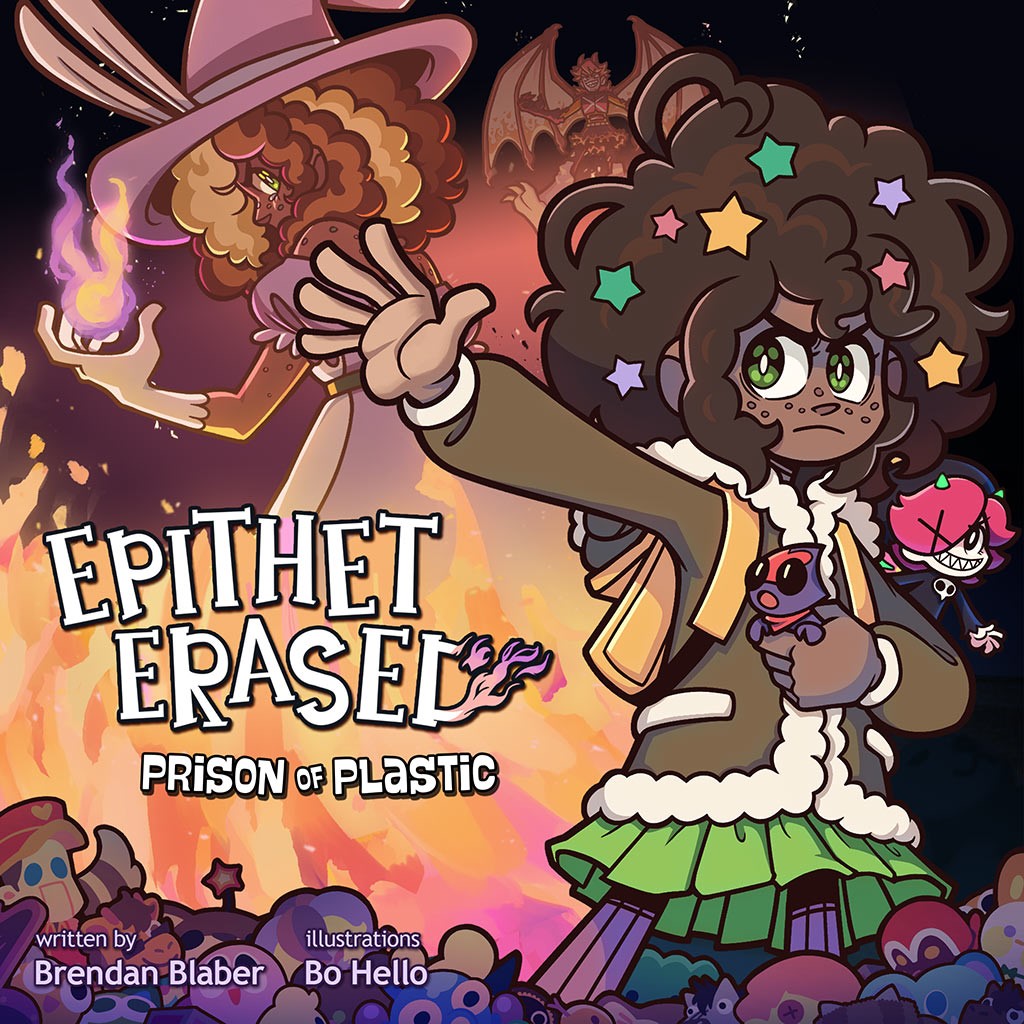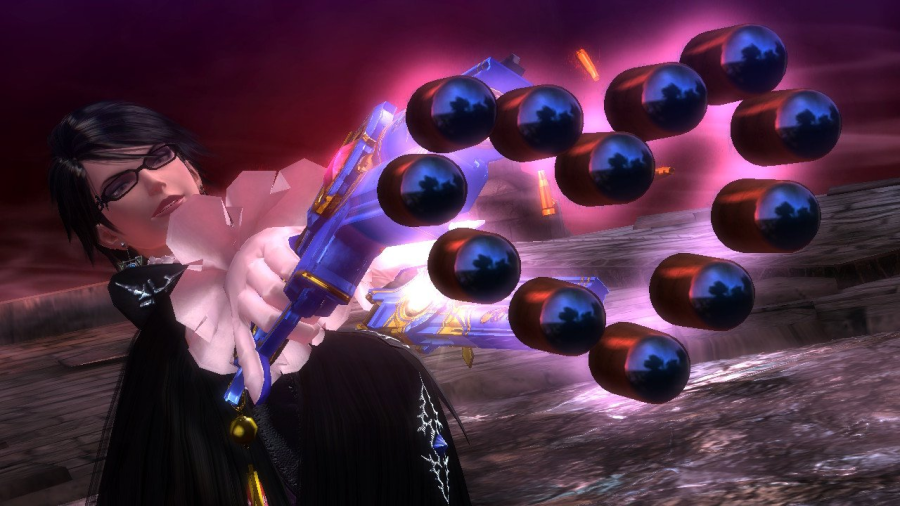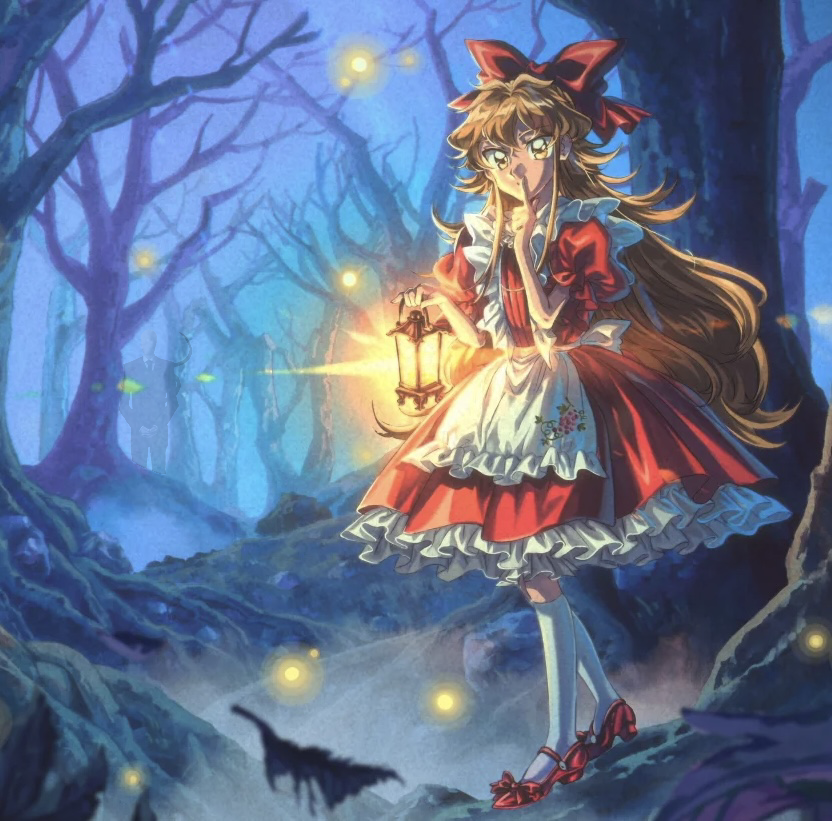
How far would you be willing to go to achieve your dreams?
Would you fight for it? How hard? Tooth and nail, to the death? Who would you be willing to fight, exactly? Would you give up precious things for it? How many? Which precious things? Heirlooms from dead loved ones? Living people, whom you love dearly?
How far would you be willing to go?
This is the question posed to Elise, the protagonist of the 2023 life simulator/survival horror game Little Goody Two Shoes by Portuguese indie developer AstralShift. A prequel to their first game, Pocket Mirror, it follows Elise in her day-to-day life in the idyllic, yet dull, town of Kieferberg as she wrestles with that very question.
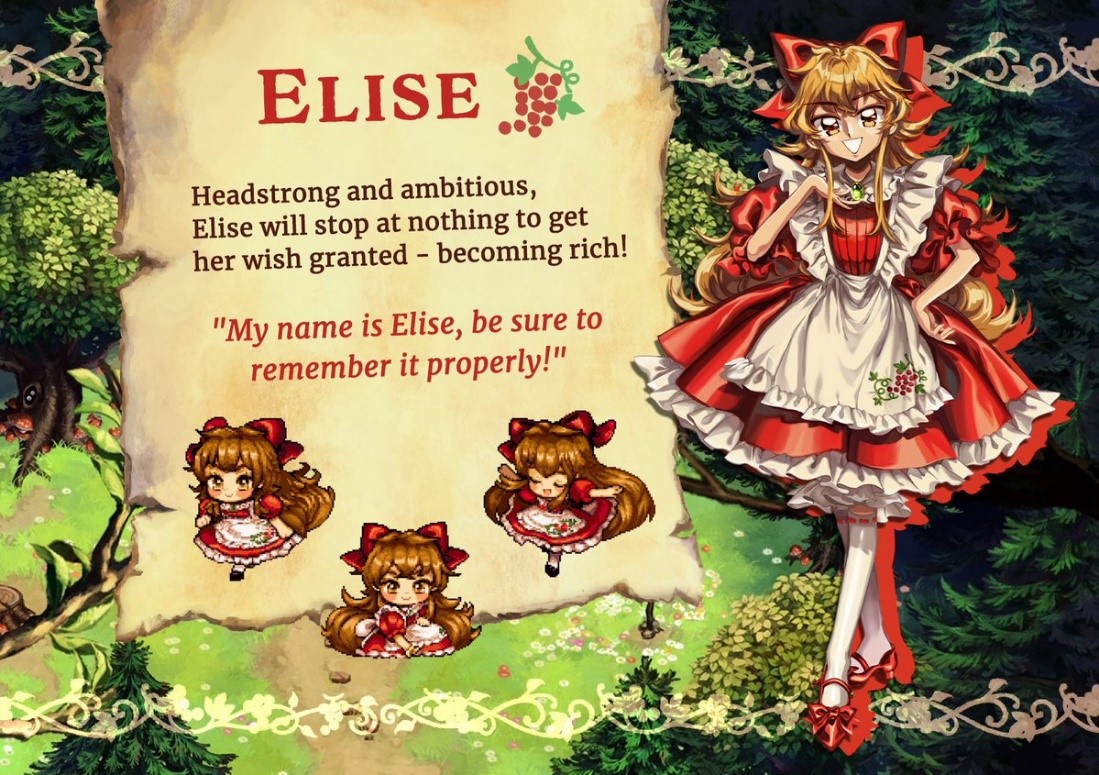
You see, Elise isn’t particularly happy living in Kieferberg. It’s fine, don’t get her wrong, but she can’t see herself living in this rustic farming community, paycheck-to-paycheck, for the rest of her life. She wants to live a cushy life of immense wealth in a grand castle of her own, with her dull housework taken care of by a legion of loyal servants—not do menial chores for the townsfolk until her legs give out!
There’s not much in Kieferberg for Elise, especially since her loving adoptive grandmother, Holle, has passed away. The most she has are a handful of friends, and, when referring to potentially obtaining her lavish dream, Elise even goes as far to say that “I would sacrifice all of Kieferberg if I had to.”
Elise’s dream seems completely out of reach, at least, until a mysterious crone appears before her one day. She informs Elise that an “old acquaintance of hers”—a being only referred to as Him, and yes, always in bold—might be inclined to grant her wish. The pair of sparkly red shoes she found buried in her backyard that morning is an. . . invitation, of sorts.

. . . Though, of course, He doesn’t work for free. Elise needs to prove she truly wants to actualize her dream, no matter the cost, for His invitation to mean anything.
The old woman explains that Elise can do that by gathering three things, called Testaments: The “Tender Flesh,” the “Sweetest Nectar,” and “Good Company.” Once she has them in hand, Elise needs to brave Kieferberg’s nearby woods, all the way to its heart, where He lies in wait.
The crone then vanishes as suddenly as she appeared, leaving Elise—who’s still questioning whether the hag was even real—with her goal: To gather these Testaments to her resolve, also referred to as Gifts, and scour the woods until she can meet Him face-to-face.
All of this has to be done over the course of one week in-game, so you have to be proactive in your search.
Every day in Little Goody Two Shoes is divided into six segments: Dawn, Morning, Afternoon, Dusk, Evening, and finally, the Witching Hour.
During all of these timeslots, you’re able to freely walk around Kieferberg, as well as its surrounding trails. It’s not a real-time type of deal, so you can comb every area every day if you want. There might just be some interesting history for you to dredge up if you do.
At Dawn, there’s not much to do besides catch up with the townsfolk about what’s happening.
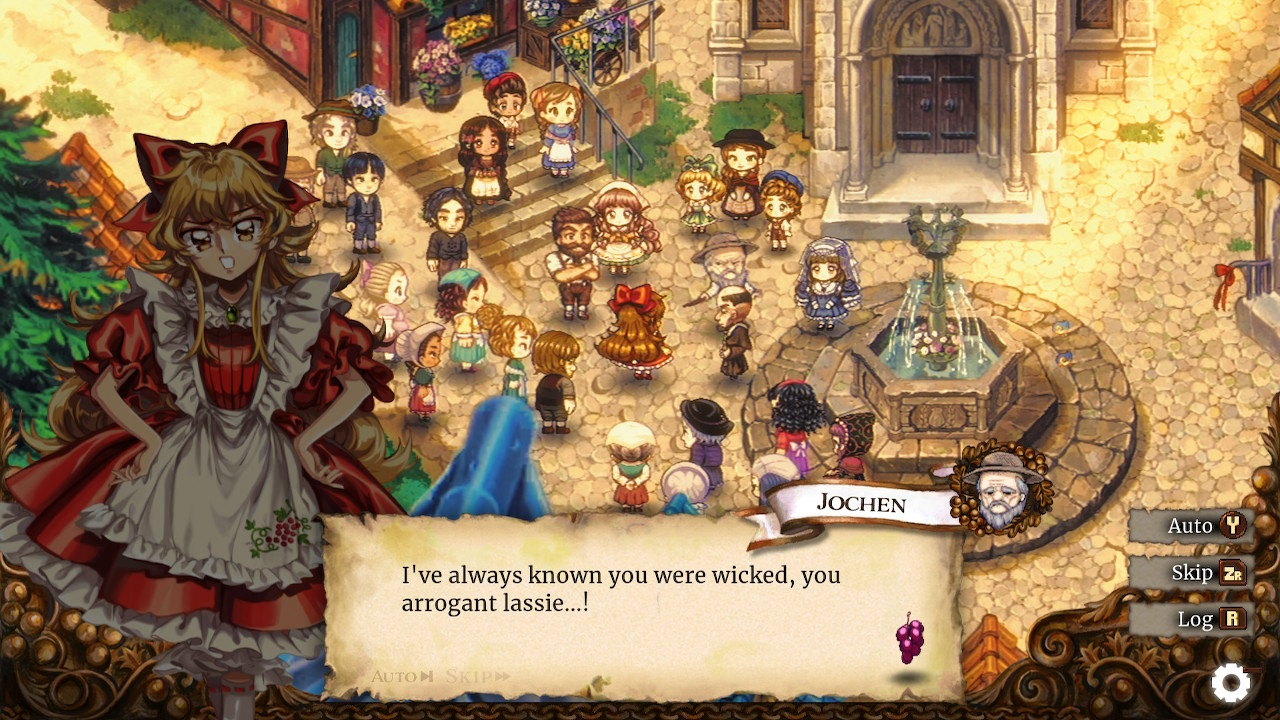
Most often, there’ll be some sort of drama, like Mrs. Ariane’s goats getting mysteriously sick, or a deluge of crows descending upon the town. The older members of the community repeatedly chalk these happenings up to a witch, who supposedly lives in the nearby woodlands.
Like with Him, mentions of the witch are always in bold, and the text is purple.
From Morning until Dusk, you’ll be given a couple of odd jobs to complete for the townsfolk. These are minigames, and your pay at the end is reflective of how well you did. You can only do one odd job per segment, and not all of them are always available, so you have to choose wisely.
It’s Raining Apples, the logging one, and Chicken Frenzy are all no big deal—they’re even fun!—but the one where you have to bat around a disgusting, soggy rat plush with the local kids is awful and I’m bad at it and I never want to do it again.
The money you get from these jobs is something you need to be very frugal with, as it’s incredibly limited and you’ll constantly be spending what little you do have. Nine times out of ten, you’ll have to make cuts somewhere.
The three places you can do this are to Elise’s health, sanity, or hunger, shown as the hearts, blue bar, and bread loaves near her portrait respectively.
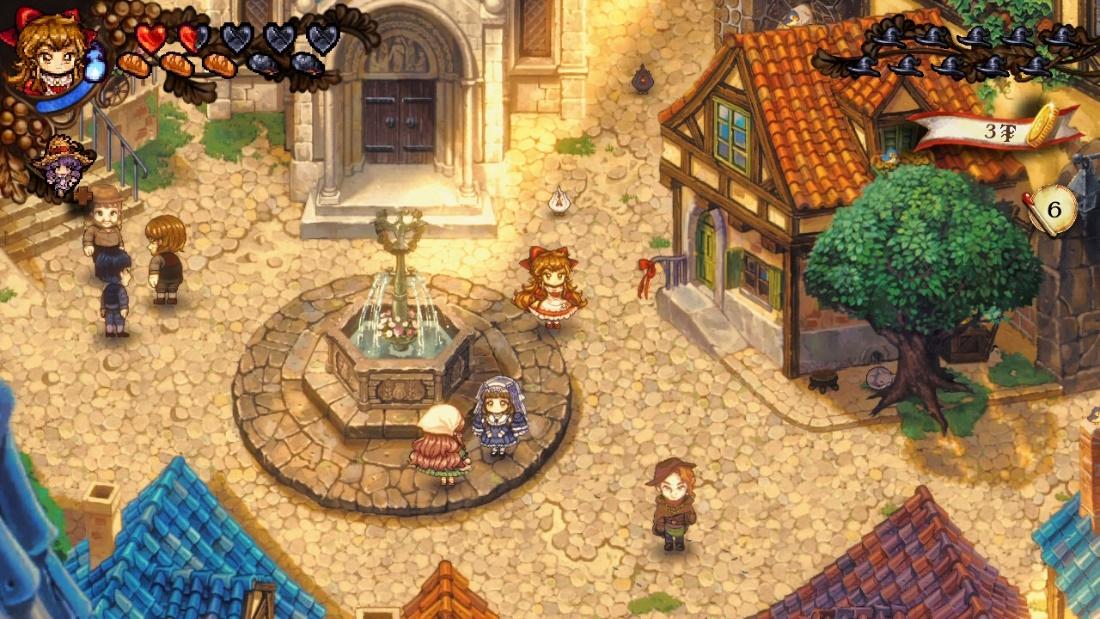
If any one of these runs out, it’s game over.
We’ll talk about health and sanity in more detail later, but I do need to go over hunger now.
You’ll lose one loaf of bread every time you go from one time slot to the next. One bread from Dawn to Morning, Morning to Afternoon, and so on. Since you only have five loaves, and there’s six time slots daily, you’ll have to fill it up frequently using purchasable consumable items.
One character who we’ll talk about later does give you some food every Evening, but it’s not enough to get you through an entire day.
Surprisingly, there is something else important you can do besides just working during the working hours. Setting up, and then going on, dates with one of Elise’s three love interests.
Yes—Elise is at least bisexual, and we love her.
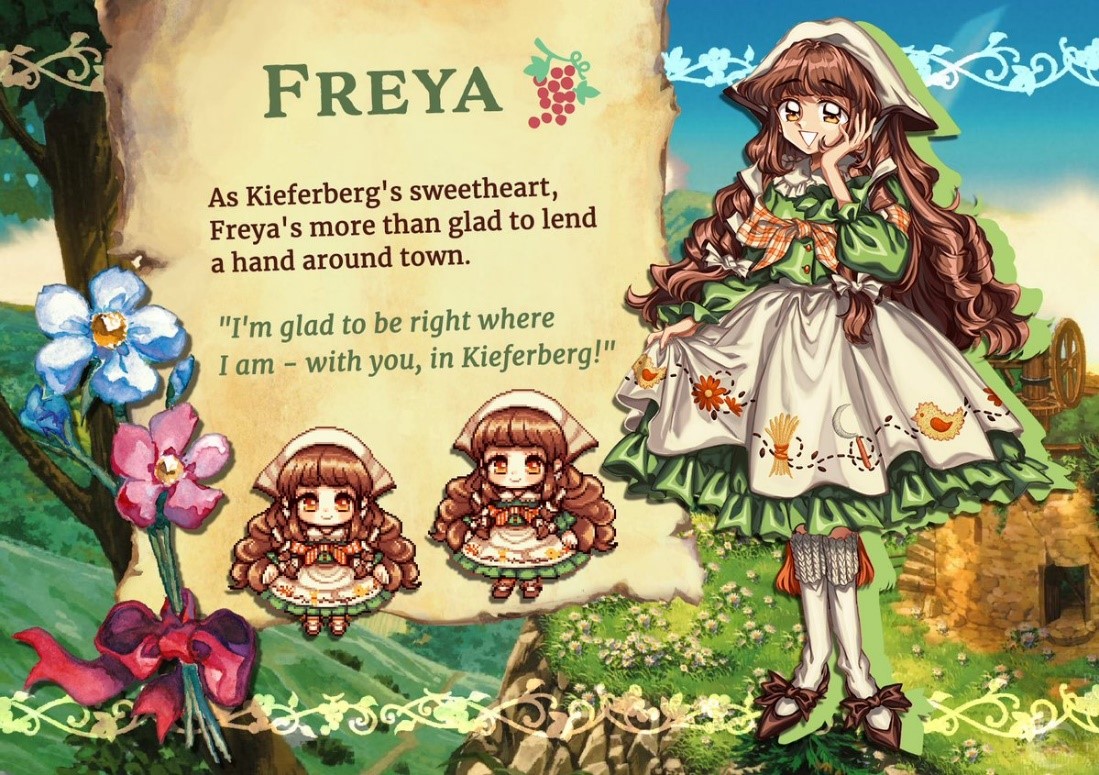
Daughter of the local logger, Freya is Kieferberg’s darling. Sweet as a pie, cute as a button, and strong as ten men combined, she’s always doing her best to contribute, no matter what.
If Freya were alive in the modern day, she’d absolutely run an Instagram account where she takes pictures of aesthetic baked goods, bushels of flowers, and other wholesome, cottagecore-type stuff. Like, she wouldn’t be a tradwife, but Freya’d skirt close enough to them that some of her followers would be.
Unlike Kieferberg and her hypothetical Instagram followers, though. . . I’m not particularly enamored by Freya. She’s just kind of mid to me. Not bad by any means, but nothing about her really grabs me—something that isn’t helped by her competition being substantially more intriguing and compelling options.
A wanderer from afar who’s wound up in Kieferberg, Rozenmarine (mistakenly referred to by Elise as “Rosmarine” at first, before making it into a nickname) is Elise’s new housemate, though they claim she’s her cousin to quell the townsfolk’s suspicions.
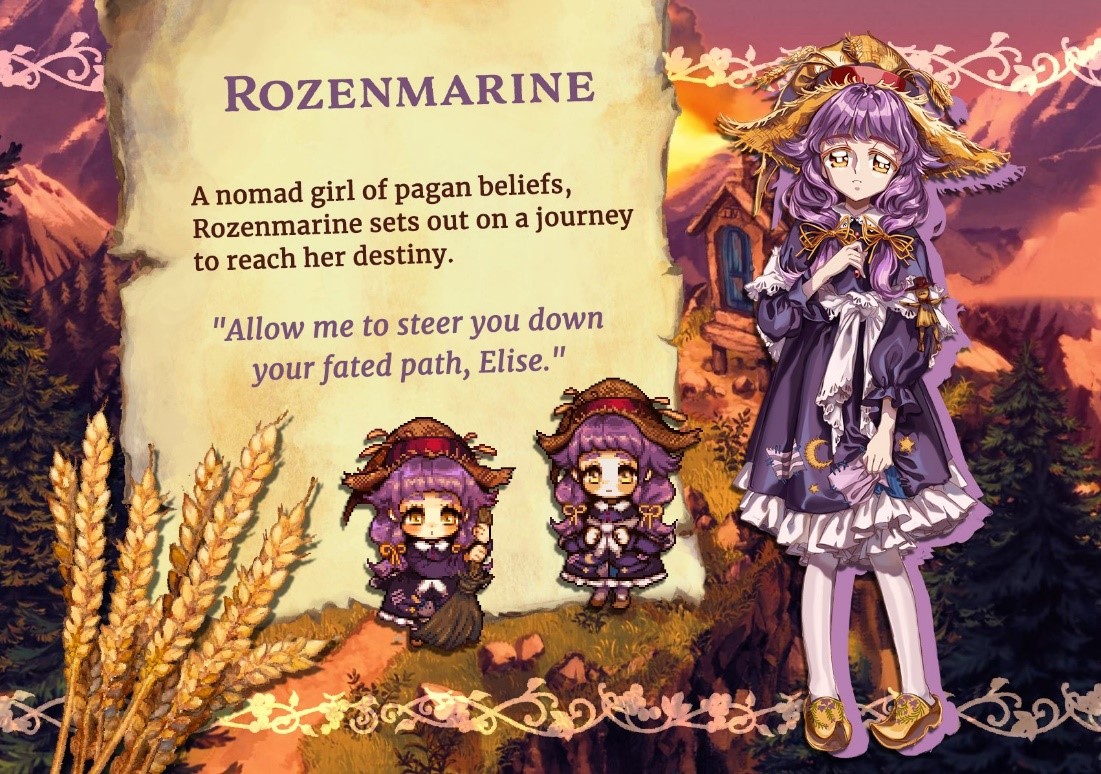
Elise first encounters her and her sussy goat trying to stay a night in her cliffside granary, but, charitably, gives Rozenmarine residence in her attic for the time being.
At first, Rozenmarine was in the same boat as Freya to me. I thought she was nice, but that was about it.
But it’s once Elise opens up to Rozenmarine about the mysterious old woman, and the search for the Gifts, that she started to grow on me.
From then on, Rozenmarine inserts herself into Elise’s search. She helps in clarifying what the Tender Flesh, Sweetest Nectar, and Good Company are, how to prepare them to His liking, and even tries following Elise into the woods once.
Rozenmarine’s not lacking in intrigue, that’s for sure, and that puts her far ahead of Freya.
Also, her character design is really nice. Her patchwork dress’ varying shades of lavender, dotted with gold, paired with her hay hat, its shiny red ribbon, and protruding wheat stalks, go phenomenally together.
I never thought someone could make a crop a fashion statement, but here we are. I can’t wait to see Rozenmarine repping this at the next Met Gala:
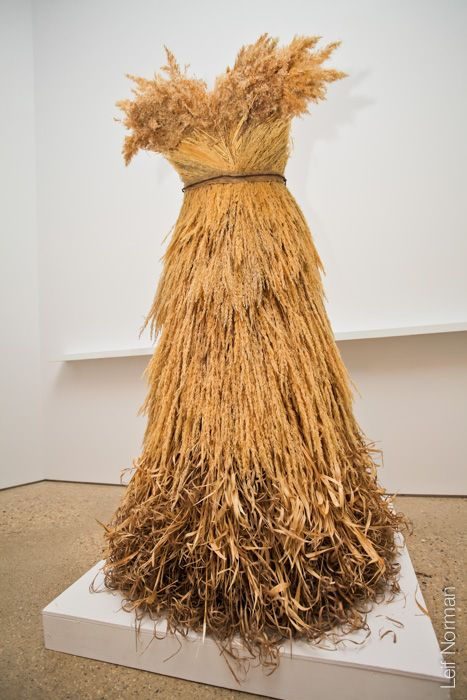
Honestly? Slay. Kinda serves, ngl.
Finally, my favorite love interest by a landslide and the one I went for first: the local nun, Lebkuchen.
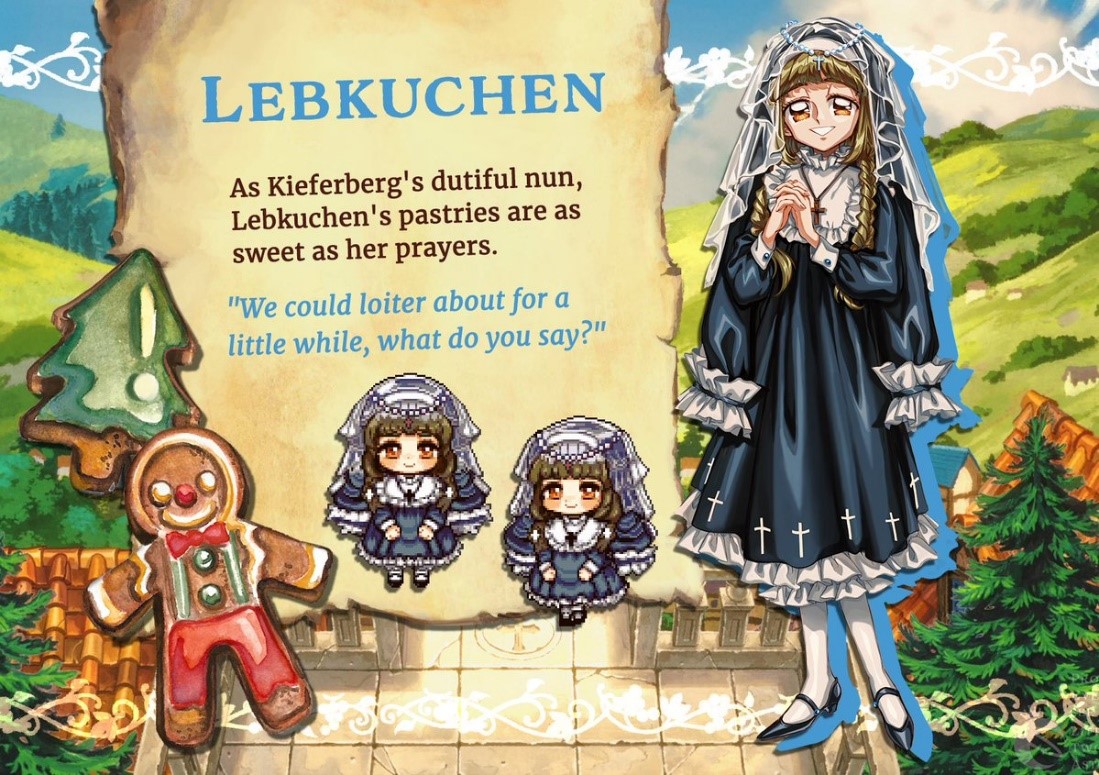
A friend of Elise’s since they were wee babes, their bond has only grown closer over the last eighteen-ish years. Elise and Lebkuchen know each other like the backs of their hands, able to recognize when the other is hurting, lying, or what-have-you, no matter how they try to hide it.
If Rozenmarine took time to “grow” on me, Lubkuchen would be a flower that was in full bloom from the start.
Immediately, she and Elise have electric chemistry. Their interactions are always full of play-jabbing, infused with blunt honesty, frustrating, evasive retorts, but under it all, unabashed care for one another.
It’s clear that these two aren’t friends just because they’re some of the only teenagers in Kieferberg. They genuinely enjoy each other’s company, and that makes for a solid foundation for a romantic relationship.
I’m a sucker for queer friends-to-lovers stories, what can I say?
Unfortunately, you only have enough time to devote to one of these three girls. I’d say pick one, stick to her, ghost the others, and work during the time slots when you’re not going on dates.
After you’ve gone through Morning, Afternoon, and Dusk, you’ll reach the Evening. All you really do during this part is go back home, to Elise’s house, a mile or so away from town. Sometimes you’ll be stopped on the way out by a game mechanic I haven’t introduced yet, but that’s pretty much it.
What you decide to do with your day is up to you, but you need to make sure you’re prepared when you reach the sixth and final time slot: the Witching Hour. When Elise enters the woods, and where the “survival horror” part of Little Goody Two Shoes’ life simulator/survival horror genre comes into play.
Kieferberg’s woods are not your regular old forest. It’s not a forest at all, really. Instead, it’s a terrifying, ever-changing trap full of things ready—and very much able—to rip Elise to shreds.

Sometimes it’s a dark, grimy world full of carnivorous, hungry “butterflies,” while other times it’s a watery, overgrown garden, with robed specters gliding across a glassy void.
The woods are consistent only in its inconsistency, so be prepared for anything.
. . . like puzzles!
For example, at one point in the miserable butterfly grime-world, your way forward is blocked by those aforementioned hungry butterflies. Their sole focus is gorging themselves on a yummy deer carcass, and they aren’t exactly wanting to move from it.
A mood, honestly.
To get them out of your way, you need to use Elise as bait. Getting close will attract the butterflies, and from there you need to bring them to one of the other deer carcasses slain nearby. Once dropped off, the butterflies will start ravenously eating, leaving Elise alone, and allowing you to go down the path they previously obstructed.
A solid puzzle. Though, unfortunately, Little Goody Two Shoes’ puzzles, even this one, have a bad habit of being janky, vague, or both. Like when you’re leading the butterflies around, for example. You will get hit, even if you’re doing it exactly as intended.
I don’t personally think the butterfly puzzle has a problem with vagueness, but some later ones absolutely do.
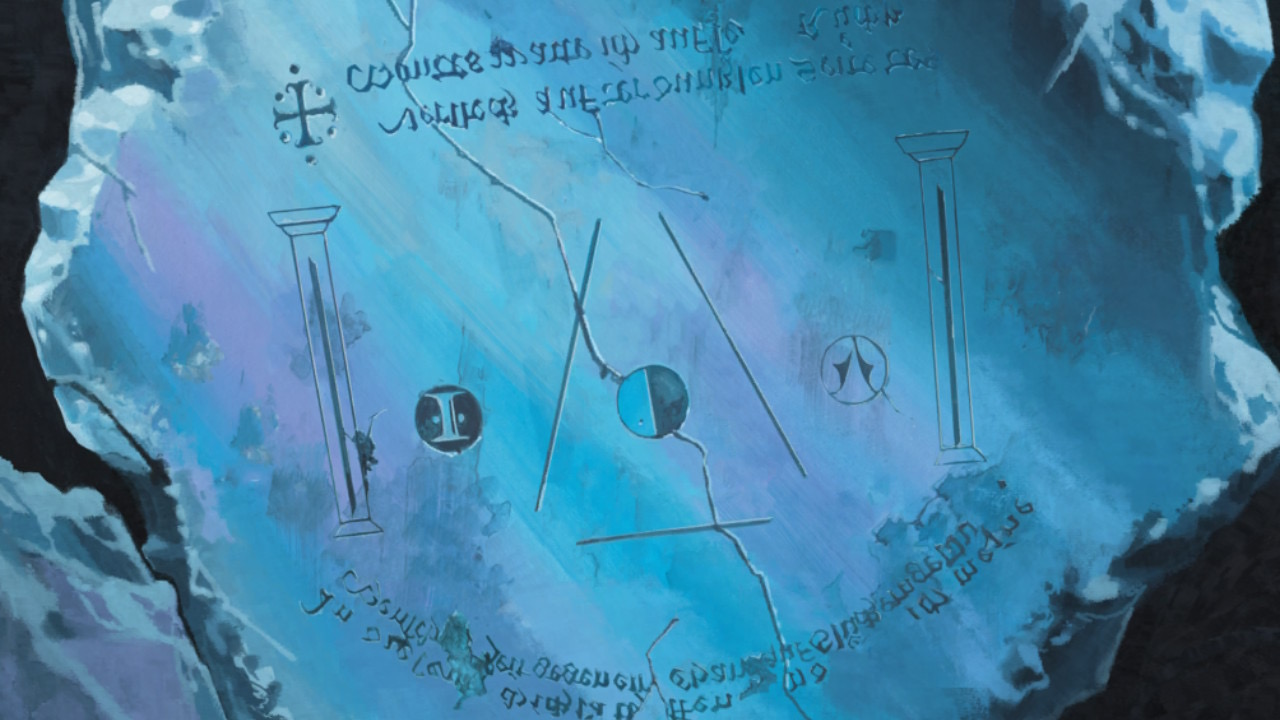
WHAT AM I SUPPOSED TO DO WITH THESE MOON PHASES???
When you’re not solving the forest’s latest and greatest evil crossword—and, sometimes, even WHILE you’re doing that—you’ll have to contend with a cavalcade of creatures after Elise’s throat, like some mean candles that violently circle at her, or giant birds that jump out from stick-thin trees.
What makes dealing with these things a real challenge is that there’s no way to fight back against them; Elise can’t defend herself. Her only option when she encounters these monsters—and by extension, your only option—is to run. Keep your eyes peeled, and run, RUN, RUN in the OPPOSITE DIRECTION AWAY if they spot you.
Staying alert is the key to keeping Elise safe and alive.
But what about keeping Elise sane?
If you’re careful, you might not even have to worry about sanity. It can only be lost in two ways: spending time in specific areas, and by interacting with the golden girls.
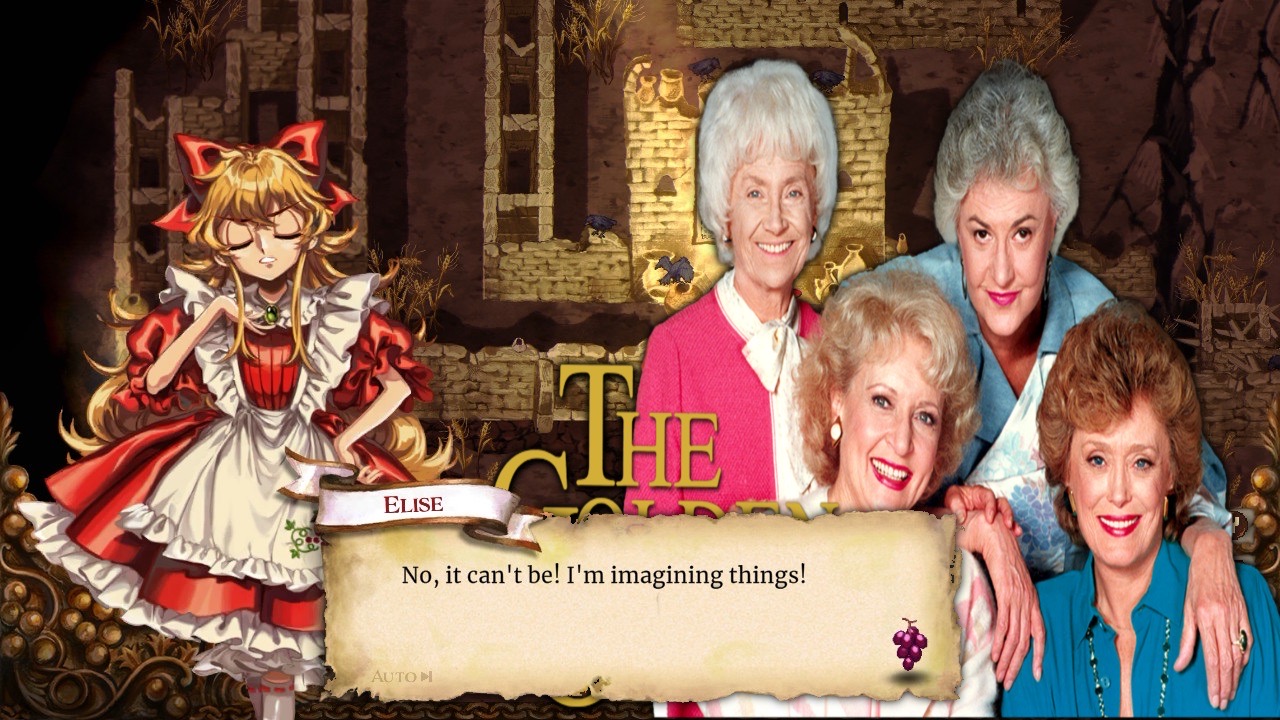
The sanity-draining areas are tucked in out-of-the-way corners of Kieferberg, like the cave near the crossroads or the old windmill. Even just standing in them will cause Elise’s sanity to steadily drop, so you can’t dally in them. You’ll know if you’re in one of these places by Elise’s portrait changing from its usual calm expression, to one that’s much more scared.
These areas are entirely optional, though. You don’t have to venture into them unless you really want to. I recommend it, as they contain a lot of background context to the story’s events and even an exclusive ending, No. 4: Apostasy, but you won’t be forced.
What you will encounter at least once in Little Goody Two Shoes are the golden girls, mostly found during the Witching Hour, signified by a cluster of golden particles. Interacting with these particles will make one of the golden girls appear, whereupon they’ll taunt or scold Elise, before maybe dropping a helpful item in exchange for a chunk of Elise’s sanity.
These items range from quality food, like apple strudels and hearty soups, to valuables to sell, like fine leather pouches and silver rosaries. They’re not free exactly, like the single heart heals and spare matches you can find in breakable pots are, but getting any item without spending money is an incredible luxury that isn’t to be passed up.
Consequently, though, that means Elise will be taking frequent, sizable hits to her sanity.
. . . And sanity can only be recovered by using consumable items . . .
Which you have to buy.
The only source of these sanity-healing items is from Kieferberg’s inn’s shop—Grape Juice and Walpurga’s Oil, for ten and fifty coin respectively.
Factoring in Elise’s sanity can really complicate what you spend your money on, so plan ahead if you decide to explore those areas or chat up the golden girlies.
Despite its at-times janky puzzles, I really love the woods. All of its sections have 10/10 atmospheres full of intense, multifaceted imagery, interesting crumbs about what’s going on behind the scenes, and a creeping sense that Elise is getting herself into something she won’t be able to escape from.
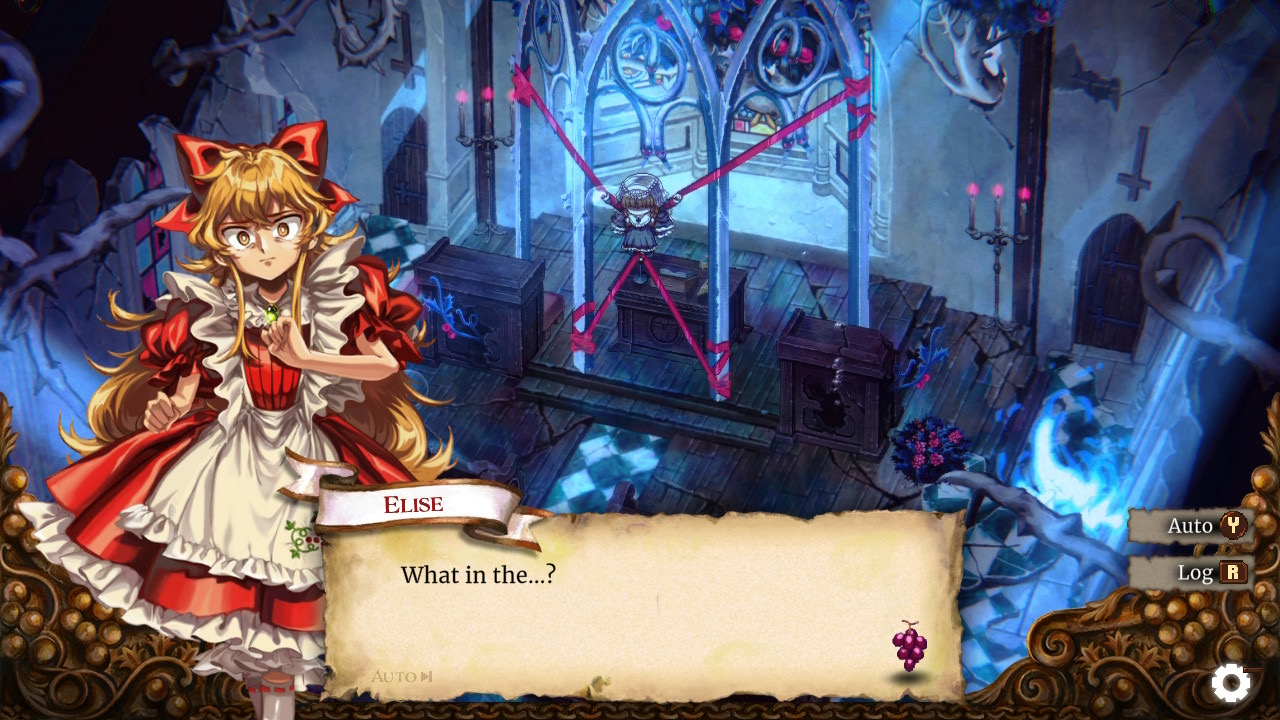
That, from the very first moment Elise stepped foot into the forest, it was already too late.
Once you finish whatever is needed to be done in the woods that Witching Hour, Elise will return home, and it will progress to Dawn the next day.
That’s the general gameplay loop of Little Goody Two Shoes; plot stuff at Dawn, work/lesbianism from Morning until Dusk, more plot stuff at Evening, and delightfully eerie survival horror during the Witching Hour.
There are some minor deviations here and there, but that’s the flow you should expect.
The things that go bump during Witching Hour aren’t the only sources of danger Elise needs to be careful with, however. During the day, the townsfolk of Kieferberg and their mob mentality can be just as vicious.
Kieferberg is a very rural, traditional sort of place; the community is tightly-knit, and gossip, rumor, and superstition abound.
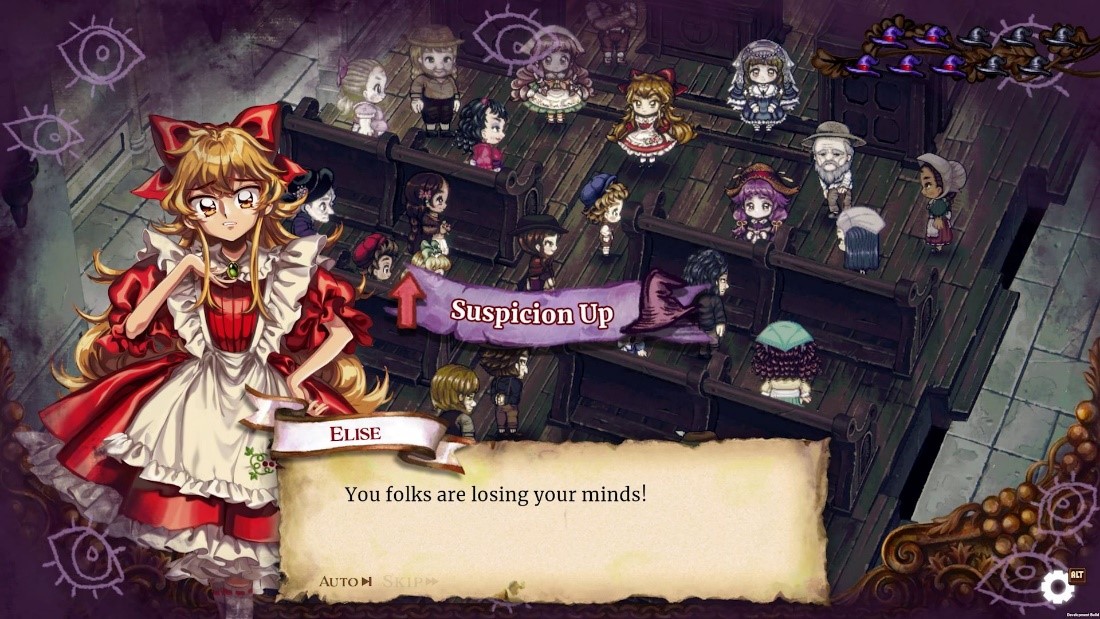
This is harmless enough at first, but as the days go on, and steadily stranger phenomena befall the town, this becomes actively dangerous.
The older folks decry these weird happenings as works of the witch, becoming riled up and loudly making fusses. Most of the townspeople don’t believe the fogies at first—yeah, it’s weird, but jumping to witchcraft is a little much, right?
But . . . as these occurrences continue to happen, over and over, intensifying each time, they do begin buying into the witch idea. They start suspecting one another—on edge about even the most minor of things—and order begins breaking down, only postponed by the local priest Hans.
The tension in the air is palpable, and Elise is not spared from suspicion.
You’ll frequently be given a choice between two dialogue options. One of them will raise the community’s distrust of Elise, while the other will lower it. If their suspicion gets too high, you’ll get a game over.
There are few ways to lower it once it gets up, watching what you say is paramount.
Elise’s current suspicion level is documented by the 2-by-5 bars of witch hats in the upper right corner, so you can check on it at any time.
Something else can also passively raise suspicion, on top of what you say: Rozenmarine.
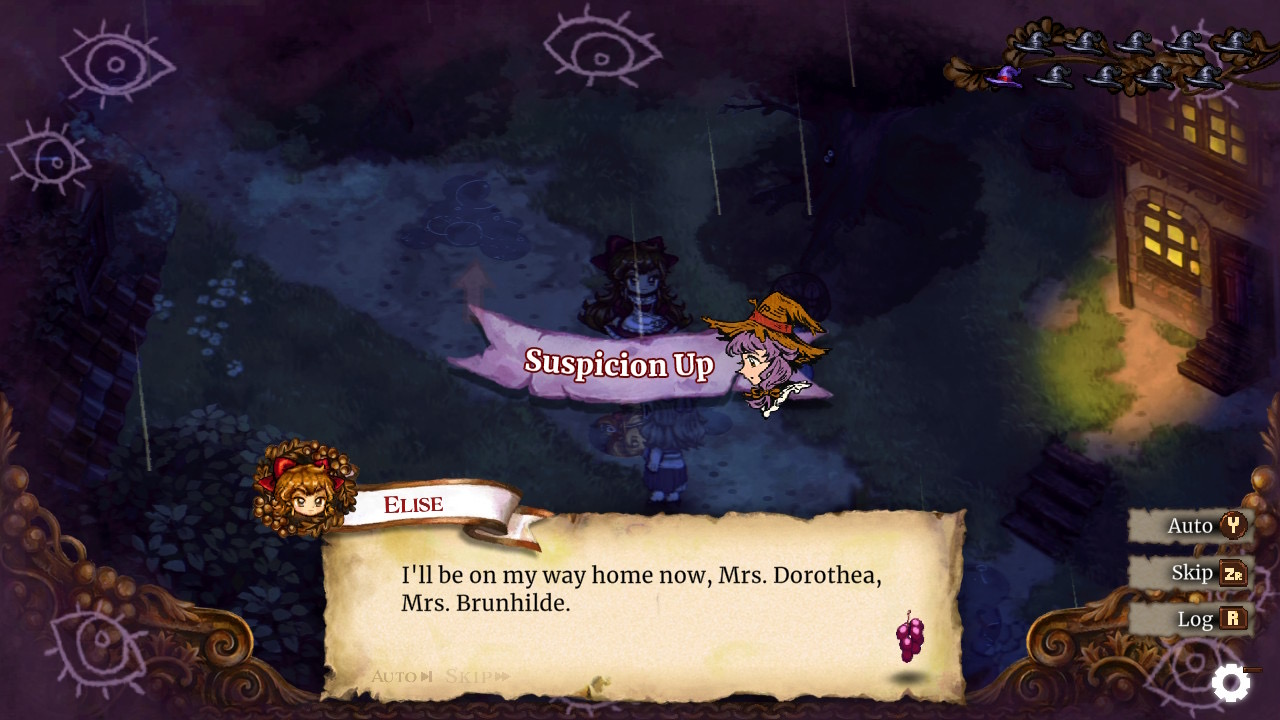
I didn’t mention it earlier, since I hadn’t introduced her yet, but whenever you do an odd job during working hours, you have the option to bring Rozenmarine along to help. This will drain three times as much hunger as if you’d done it alone, so it’s not generally worth it, but not having her help ever will leave Rozenmarine to run around town unchecked—unintentionally making the townsfolk suspicious of both her and Elise.
If you go it solo all day, at Evening, a townsperson will confront Elise on her way home. They’ll bring up their distrust of Rozenmarine to her, and you’ll have to go through a gauntlet of choices to keep them from jumping to undesirable conclusions.
Unfortunately, compounding Rozenmarine, is someone else else to keep an eye on when trying to keep suspicion down.
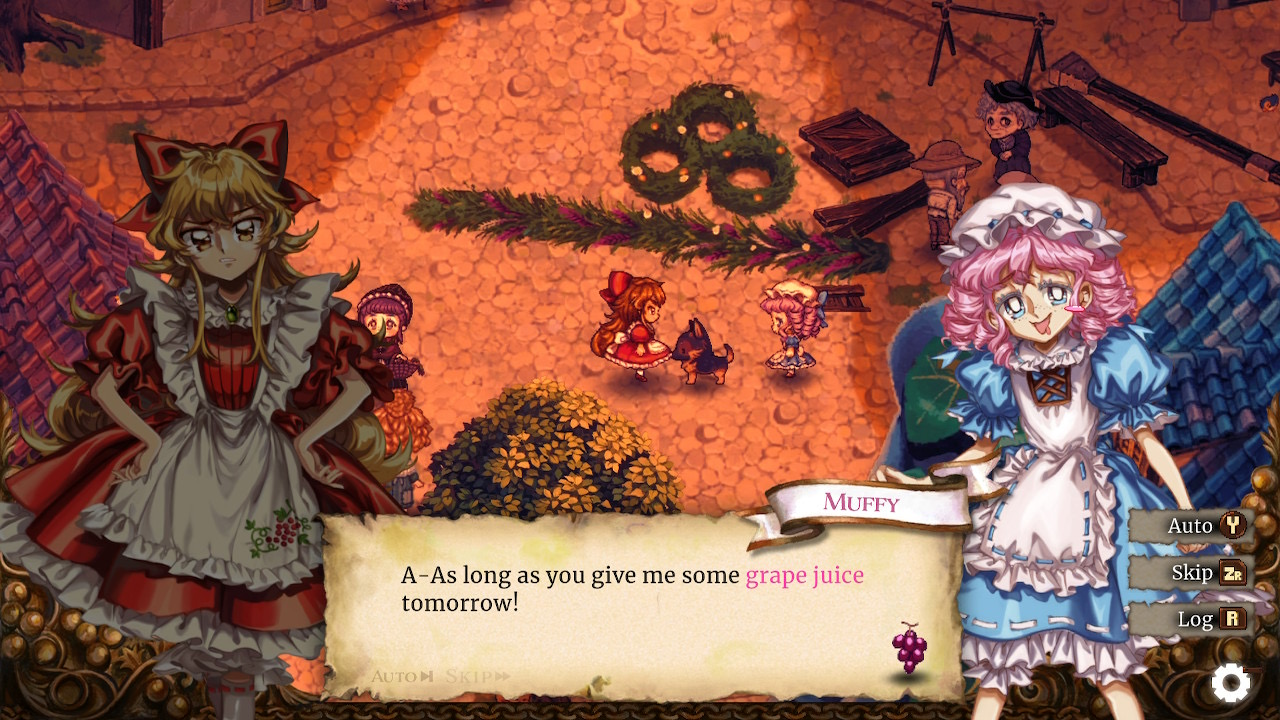
Muffy.
This bubblegum-haired, snot-nosed nuisance is, single-handedly, one of the biggest challenges Little Goody Two Shoes has up its puffy, frilly sleeves.
But at the same time, she can be an indispensable ally.
Muffy’s whole thing is simple: in exchange for her keeping her mouth shut about Elise’s secrets, Elise will have to give her the food items she asks for. If you don’t give her the correct food, suspicion will rise, but if you comply, Muffy will keep her end of the deal, and even lower Elise’s suspicion.
While this can get very annoying very fast, adding yet ANOTHER money sink, Muffy provides a valuable service. Mitigating suspicion, even if at a price, can, genuinely, be a saving grace.
. . . But that’s only if you can pay that price. The food items Muffy asks for get more expensive, starting with cheap bread and juice, but climbing up to things that create gashes in Elise’s already thinly stretched funds.
Money is really the most important thing to manage in Little Goody Two Shoes.
Keeping Elise fed; keeping her alive; keeping her sane; keeping Muffy satisfied so Elise’s suspicion doesn’t go through the roof; it all takes money, and constant weighing of what is and is not worth it. Misuse of money can derail any run, so you always need to account for it.
It really puts you in Elise’s glittery, red-heeled shoes, showing why exactly she’s going so far to reach Him; to get out of this poverty.
Turns out, the real survival horror of Little Goody Two Shoes isn’t the woods, being a lesbian in a small, conservative town, or the radicalization of one’s beloved neighbors; but rather, capitalism.

Just like real life.
Little Goody Two Shoes is, honestly, one of my games of the year for 2023. I’m not kidding when I say that it’s up there with the likes of The Legend of Zelda: Tears of the Kingdom and Limbus Company, and I’m not even that big of a horror fan!
Its story of a girl risking life and limb for a chance at happiness, her growing inner conflict about if this is really what she wants; the enthralling horror of the woods; the strict, but empathizing money management that everything revolves around; the beautiful, polished 90’s Shoujo art style; it all comes together to make a game that’s unforgettable.
Elise is, straight-up, one of the best video game protagonists in recent memory.
Little Goody Two Shoes is not without its flaws, as I’ve said. The puzzles can be janky and unclear, and it can be exhausting to have to constantly keep tabs on Elise’s stats so that you don’t wind up in an unrecoverable situation days in the future.
But despite that, I really do like this game. If this article, even slightly, intrigued you to Elise’s story, I highly recommend that you look into buying it. I swear on my Christian, witchcraft-practicing, PlayBoy Bunny great-grandmother’s life that it’s worth it.
Go Bengals, and yes, that is Slenderman!
. . . Though, do be aware that there are a lot of intense, flashing lights. Particularly when Elise dies from losing too much health, which happens a lot. The screen goes dark, before reviving with a silhouette of Elise dying, eyes wide and screeching in pain, outlined by lightning-fast, red strobing.
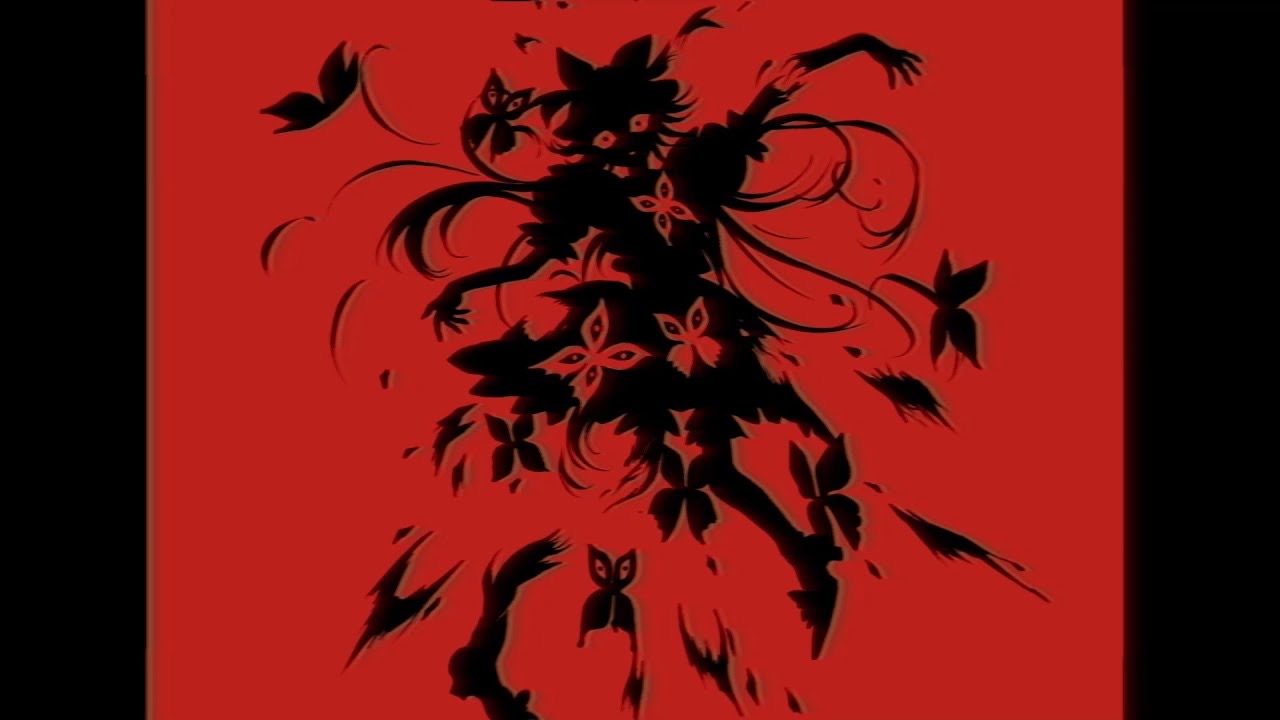
If you have photosensitive epilepsy or anything else of the sort, I, unfortunately, can’t recommend Little Goody Two Shoes in good conscience. Hopefully AstralShift will update the game with something—at the time of writing, the game only just recently came out, so it’s not implausible—but until then, I’d steer clear.


